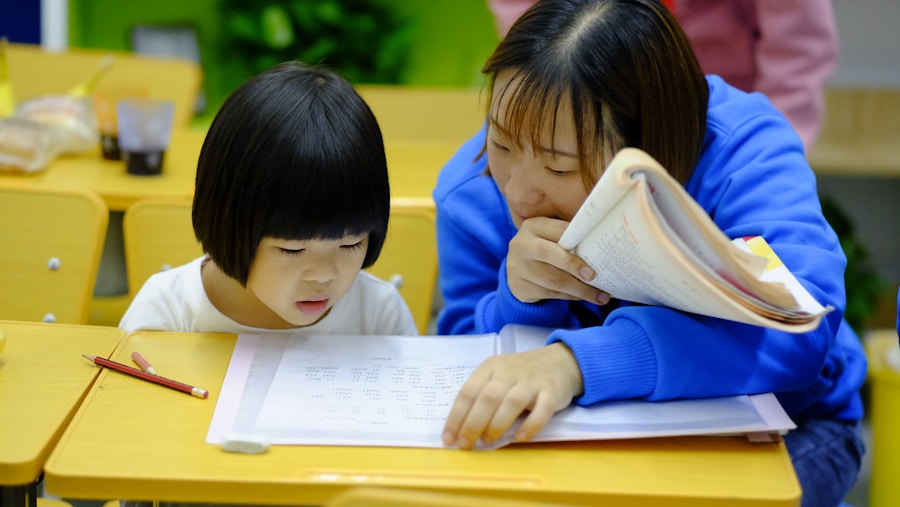
Dialogues serve as a fundamental component in the process of language acquisition, acting as a bridge between theoretical knowledge and practical application. They provide learners with the opportunity to engage in authentic communication, which is essential for developing fluency and comprehension. When learners participate in dialogues, they are not merely memorizing vocabulary or grammar rules; they are actively using the language in context.
This contextual usage helps solidify their understanding and retention of the language, making it more likely that they will be able to recall and use it in real-life situations. Moreover, dialogues expose learners to various linguistic nuances, including intonation, rhythm, and colloquial expressions that are often absent from traditional language instruction.
This exposure is crucial because language is not just a set of rules; it is a living entity that evolves with culture and context. By engaging with dialogues, learners can better understand how language functions in social interactions, which is vital for effective communication.
Key Takeaways
- Dialogues play a crucial role in language learning as they provide real-life context and help learners understand cultural nuances.
- Incorporating dialogues in language curriculum can make learning more engaging and interactive for students.
- Dialogues can be used to improve listening and speaking skills by providing opportunities for practice and feedback.
- Using dialogues can enhance vocabulary and grammar as learners are exposed to new words and sentence structures in context.
- Role-play and simulations offer a way for learners to practice real-life language skills in a safe and controlled environment.
Incorporating Dialogues in Language Curriculum
Integrating dialogues into the language curriculum can significantly enhance the learning experience. Educators can design lessons that revolve around specific themes or scenarios relevant to the learners’ lives, allowing them to practice language skills in a meaningful way. For example, a curriculum focused on travel could include dialogues that simulate booking a hotel room or ordering food at a restaurant.
Such practical applications not only make learning more engaging but also prepare students for real-world interactions. Additionally, incorporating dialogues can cater to different learning styles. Visual learners may benefit from reading scripts while auditory learners can focus on listening exercises.
Role-playing these dialogues allows kinesthetic learners to engage physically with the material. By providing varied methods of interaction with dialogues, educators can create a more inclusive environment that addresses the diverse needs of their students. This multifaceted approach ensures that all learners have the opportunity to practice and internalize the language effectively.
Using Dialogues to Improve Listening and Speaking Skills

Listening and speaking are two of the most critical skills in language learning, and dialogues are an effective tool for enhancing both. Engaging with dialogues allows learners to practice active listening, which is essential for understanding spoken language in real-time. For instance, when students listen to recorded dialogues or participate in live conversations, they must focus on pronunciation, tone, and context to comprehend the message being conveyed.
This practice helps them develop their auditory processing skills, making it easier to follow conversations in various settings. Conversely, speaking skills are honed through the repetition and practice of dialogues. When learners engage in dialogue exercises, they have the opportunity to articulate their thoughts and responses in a structured manner.
This practice not only builds confidence but also encourages learners to experiment with new vocabulary and grammatical structures. For example, a student might practice a dialogue about shopping, allowing them to use phrases related to bargaining or expressing preferences. The more they practice speaking through dialogues, the more fluent and comfortable they become in using the language spontaneously.
Enhancing Vocabulary and Grammar with Dialogues
| Metrics | Results |
|---|---|
| Number of students enrolled in the program | 250 |
| Percentage of students showing improvement in vocabulary and grammar | 85% |
| Average increase in vocabulary and grammar scores | 15% |
| Number of dialogues practiced per week | 5 |
Dialogues are an excellent medium for expanding vocabulary and reinforcing grammatical structures. Through contextualized examples, learners encounter new words and phrases that are relevant to specific situations. For instance, a dialogue about a doctor’s visit might introduce medical terminology that students would not typically encounter in standard vocabulary lists.
This contextual learning helps students understand how words function within sentences and how they can be used appropriately in conversation. Furthermore, dialogues provide an opportunity for learners to see grammar in action. Rather than learning grammar rules in isolation, students can observe how different tenses, sentence structures, and conjunctions are used within conversations.
For example, a dialogue that shifts between past and present tense can illustrate how to narrate events effectively. By analyzing these structures within authentic contexts, learners are more likely to internalize grammatical concepts and apply them correctly in their own speech and writing.
Role-play and Simulations for Real-life Language Practice
Role-play and simulations are powerful techniques that leverage dialogues for immersive language practice. By simulating real-life scenarios, learners can apply their language skills in a safe environment where mistakes are part of the learning process. For instance, students might role-play as customers and shopkeepers, allowing them to practice transactional language while also developing their interpersonal skills.
This experiential learning approach not only reinforces vocabulary and grammar but also builds confidence in using the language spontaneously. Moreover, role-playing encourages creativity and critical thinking as learners must adapt their language use based on the context of the scenario. For example, if students are tasked with negotiating prices during a market simulation, they must think on their feet and use persuasive language effectively.
This kind of practice prepares them for actual conversations outside the classroom, where they will need to navigate various social dynamics and cultural nuances.
Utilizing Dialogues for Cultural Understanding

Language is deeply intertwined with culture, and dialogues provide an excellent avenue for exploring cultural contexts. Through dialogues that reflect cultural norms, values, and practices, learners gain insights into the social fabric of the language they are studying. For instance, a dialogue centered around holiday traditions can reveal how cultural celebrations shape language use and expressions.
This understanding fosters greater empathy and appreciation for diverse cultures among learners. Additionally, dialogues can highlight cultural differences in communication styles. For example, a dialogue that showcases direct versus indirect communication can help learners understand how cultural backgrounds influence conversational norms.
By analyzing these differences through dialogues, students become more culturally competent and better equipped to navigate cross-cultural interactions. This cultural awareness is essential not only for language proficiency but also for building meaningful relationships in an increasingly globalized world.
Technology and Digital Resources for Interactive Dialogues
The advent of technology has transformed how dialogues can be incorporated into language learning. Digital resources such as language learning apps, online platforms, and interactive software offer innovative ways for learners to engage with dialogues. For instance, applications like Duolingo or Babbel often include dialogue-based exercises that allow users to practice speaking and listening skills interactively.
These platforms often utilize gamification elements to make learning more engaging and motivating. Moreover, technology enables access to authentic materials such as podcasts, videos, and online conversations that feature native speakers. Learners can listen to real-life dialogues that reflect current language use and cultural references.
This exposure not only enhances listening skills but also provides context for vocabulary and expressions that may not be covered in traditional textbooks. Virtual classrooms also allow for real-time dialogue practice with peers or instructors from around the world, further enriching the learning experience.
Tips for Effective Dialogue-based Language Learning
To maximize the benefits of dialogue-based language learning, several strategies can be employed by both educators and learners. First, it is essential to select dialogues that are relevant to the learners’ interests and needs. When students find the content engaging, they are more likely to invest time and effort into practicing it.
Another effective strategy is to encourage reflection after dialogue practice sessions. Learners should take time to discuss what they found challenging or enjoyable about the exercise.
This reflection can lead to deeper understanding and retention of language concepts while also fostering a growth mindset towards language learning. Finally, consistent practice is key; regular engagement with dialogues—whether through formal lessons or informal conversations—will reinforce skills over time and contribute to overall fluency. By implementing these strategies within a structured framework that emphasizes dialogue’s role in language learning, educators can create dynamic environments where students thrive linguistically and culturally.
The integration of dialogues into language education not only enhances linguistic proficiency but also prepares learners for meaningful interactions in diverse contexts.
Improving language proficiency through dialogues is crucial for language learners to practice their speaking skills in a natural and interactive way. One related article that can further enhance language proficiency is Conversation Topics: Shopping. This article provides vocabulary and phrases related to shopping, allowing learners to engage in conversations about this common topic. By practicing dialogues about shopping, language learners can improve their communication skills and expand their language proficiency.
FAQs
What are dialogues in language learning?
Dialogues in language learning are scripted conversations between two or more people that are used to practice and improve language proficiency. They are often used in language courses and textbooks to provide learners with examples of natural language usage and to help them develop their speaking and listening skills.
How do dialogues help improve language proficiency?
Dialogues help improve language proficiency by providing learners with opportunities to practice speaking and listening in a natural and contextualized way. By engaging with dialogues, learners can improve their vocabulary, grammar, pronunciation, and fluency, as well as their ability to understand and respond to real-life conversations.
What are some common types of dialogues used in language learning?
Common types of dialogues used in language learning include everyday conversations, role-plays, situational dialogues (e.g. at the airport, in a restaurant), and scripted scenarios. These dialogues are designed to simulate real-life interactions and provide learners with practical language skills for various social and professional contexts.
How can learners effectively use dialogues to improve their language proficiency?
Learners can effectively use dialogues to improve their language proficiency by actively engaging with the material. This can involve listening to and repeating the dialogues, practicing with a language partner, using the dialogues as a model for creating their own conversations, and seeking opportunities to apply the language skills they have learned in real-life situations.
Are there any specific strategies for using dialogues to improve language proficiency?
Some specific strategies for using dialogues to improve language proficiency include focusing on specific language features (e.g. vocabulary, grammar, pronunciation), using the dialogues as a springboard for discussion and reflection, and seeking out additional resources (e.g. audio recordings, language exchange partners) to supplement and reinforce the learning experience.



